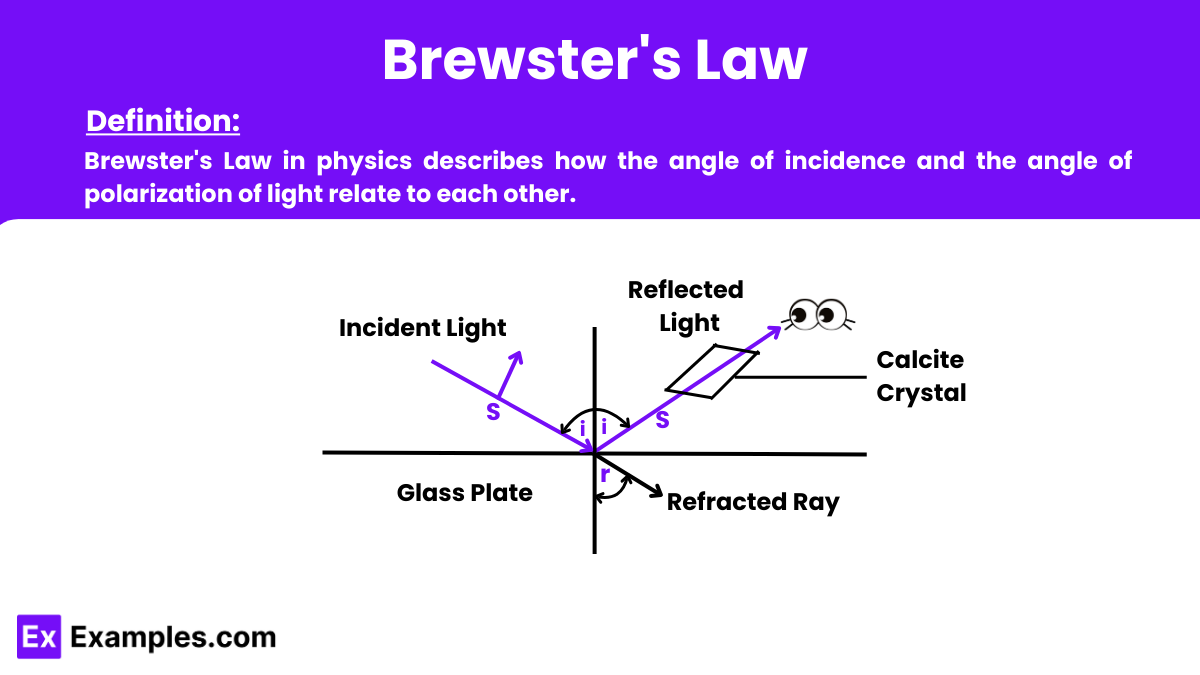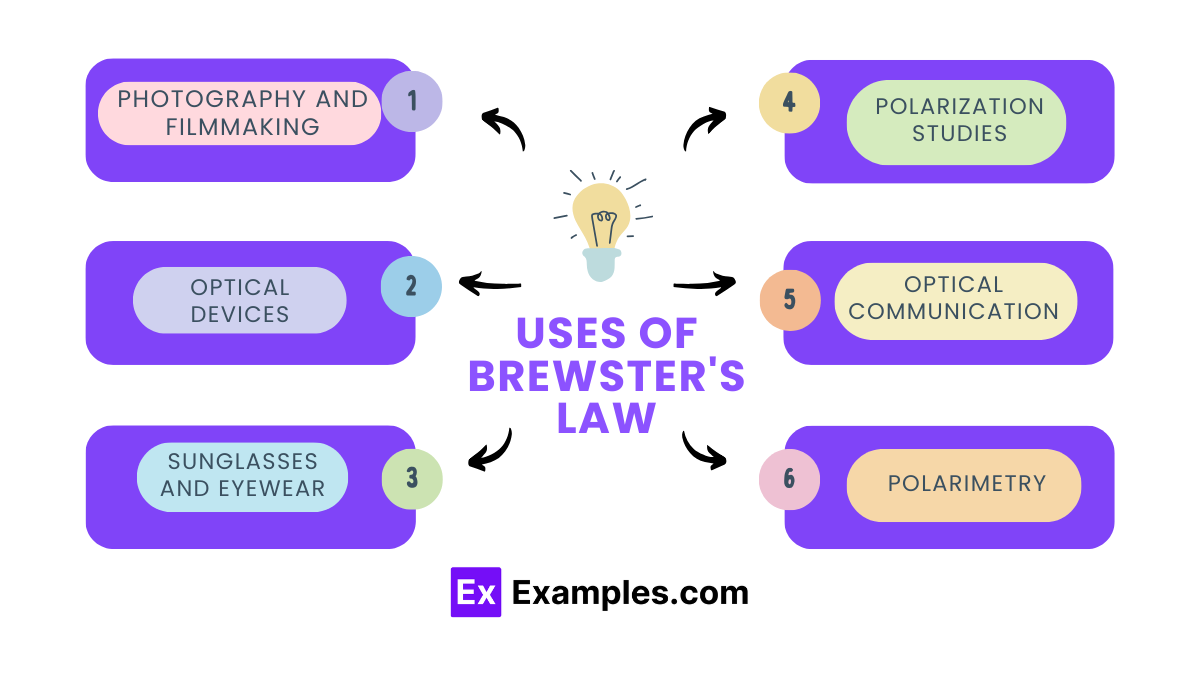What does Brewster's Law describe?
The reflection of light from a mirror
The refraction of light through a lens
The polarization of light reflected from a surface
The diffraction of light through a slit


Brewster’s Law in physics describes how the angle of incidence and the angle of polarization of light relate to each other. It establishes that the refractive index of a material determines the angle of incidence at which light becomes perfectly polarized, with the reflected and refracted rays being perpendicular to each other.
The formula for Brewster’s Law relates the Brewster angle (𝜃𝐵). At which light is perfectly polarized upon reflection, to the refractive indices of the two media involved. It is given by:
where:
At this angle, known as the polarization angle, the reflected light polarizes perpendicular to the plane of incidence.
Concept: When light hits a material (like glass) at a certain angle, known as the Brewster angle. The reflected light becomes perfectly polarized (vibrates in one direction).
Key Idea: At the Brewster angle, the reflected and refracted light rays are perpendicular to each other.
Snell’s Law: This law relates the angle of incidence and the angle of refraction for light passing from one medium to another: 𝑛₁sin𝜃𝑖=𝑛₂sin𝜃𝑟
𝑛₁ and 𝑛₂ are the refractive indices of the two media (air and glass, for example).
𝜃𝑖 is the angle of incidence, and 𝜃𝑟 is the angle of refraction.
Brewster’s Condition: At the Brewster angle, the refracted light’s angle (𝜃𝑟) and the incident light’s angle (𝜃𝑖=𝜃𝐵) are related such that: 𝜃𝑟=90⁰−𝜃𝐵
Simplify the Equation: Substituting 𝜃𝑟=90⁰−𝜃𝐵 into Snell’s law: 𝑛₁sin𝜃𝐵=𝑛₂cos𝜃𝐵
Final Formula: Divide both sides by cos𝜃𝐵: tan𝜃𝐵=𝑛₂𝑛₁
This formula tells us that the Brewster angle (𝜃𝐵) depends on the refractive indices of the two media involved.

Brewster’s Law dictates that reflected light becomes polarized when unpolarized light strikes a transparent medium at Brewster’s angle, where the reflected and refracted rays are perpendicular.
Brewster’s Law deals with polarization by reflection, whereas Malus’s Law quantifies the intensity of polarized light passing through a polarizer, making them fundamentally different.
Brewster’s photo helps analyze polarization effects, applying Brewster’s Law to observe polarized light reflections for scientific studies, optical designs, and photographic applications.
Text prompt
Add Tone
10 Examples of Public speaking
20 Examples of Gas lighting
What does Brewster's Law describe?
The reflection of light from a mirror
The refraction of light through a lens
The polarization of light reflected from a surface
The diffraction of light through a slit
According to Brewster's Law, what is the relationship between the angle of incidence and the angle of refraction?
They are equal
Their sum is 90 degrees
Their product is 1
They are complementary
What is Brewster's angle for a material with a refractive index of 1.5?
56.3 degrees
41.8 degrees
53.1 degrees
48.6 degrees
At Brewster's angle, what is the polarization state of the reflected light?
Unpolarized
Partially polarized
Fully polarized parallel to the plane of incidence
Fully polarized perpendicular to the plane of incidence
How is Brewster's angle affected by increasing the refractive index of the reflecting material?
Increases
Decreases
Remains constant
Becomes zero
What happens to the Brewster angle if the light transitions from air (n=1) to water (n=1.33)?
Decreases
Increases
Remains the same
Becomes 90 degrees
For which type of light does Brewster's Law apply?
Only visible light
Only infrared light
Only ultraviolet light
All types of light
What is the Brewster angle for light traveling from air into a medium with a refractive index of 2?
26.6 degrees
45 degrees
63.4 degrees
90 degrees
If light is incident at Brewster's angle, what happens to the transmitted light?
Becomes fully polarized
Becomes partially polarized
Remains unpolarized
Becomes completely absorbed
What is the significance of Brewster's angle in photography?
Reduces lens flare
Increases image brightness
Reduces glare from reflective surfaces
Increases depth of field
Before you leave, take our quick quiz to enhance your learning!

